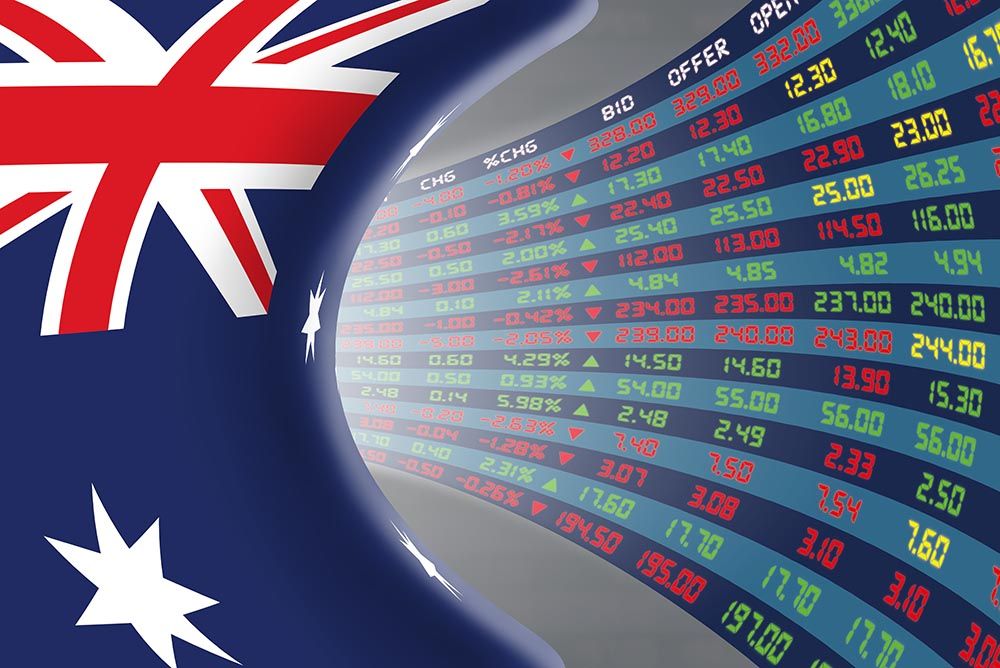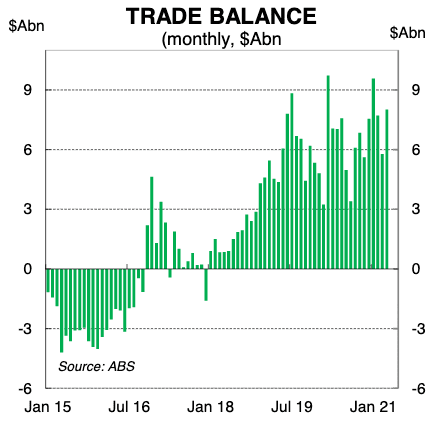Pound-Australian Dollar: 2021 Highs Beckon, Aussie Trade Data Impresses
- Written by: Gary Howes
-
- Aus records strong trade data
- But AUD finds no buyers
- GBP/AUD close to 2021 highs
- Melbourne outbreak a key risk to outlook

Image © Adobe Images
- GBP/AUD reference rates at publication:
- Spot: 1.8379
- Bank transfer rates (indicative guide): 1.7737-1.7865
- Money transfer specialist rates (indicative): 1.8215-1.8250
- More information on securing specialist rates, here
- Set up an exchange rate alert, here
Given the strength of Australia's trade dynamics its currency could be notably stronger, with analysts saying a failure to rise can be placed squarely on the Reserve Bank of Australia's doorstep.
Indeed, the Australian Dollar is close to its 2021 lows against the Pound and those looking for a stronger Pound-to-Australian Dollar exchange rate (GBP/AUD) will be on notice to anticipate fresh highs over coming days or weeks.
The Australian Dollar lost value to the Pound, Euro, Dollar and other major currencies in the wake of data out Thursday June 03 showing Australia's trade balance reached A$8.028BN in April, which is well ahead of the A$7.900BN the market was looking for.
A positive trade balance such as this means the country earns more from exports than it spends on imports prodivind a fundamental source of support for the Australian Dollar.
Secure a retail exchange rate that is between 3-5% stronger than offered by leading banks, learn more.
The Australian Bureau of Statistics said gains were recorded across all the major export categories in the month, highlighting the depth of support to the data.
Rural goods exports rose by 3.8% in April driven by the export of cereals (10.0%) and wool (9.2%).
Non-rural goods exports rose by 4.8% with increases across all the major commodity exports.
Exports of transport equipment and other manufactured goods also rose while exports of services rose by 0.6% in the month.
Imports meanwhile fell by 3.2% in April.
Image courtesy of CBA.
"Looking ahead we expect to see another solid trade surplus in May thanks to strong commodity prices," says Kristina Clifton, Senior Economist at Commonwealth Bank of Australia.
The strength of the trade data implies a degree of support exists for the Australian Dollar, but analysts have nevertheless expressed surprise of late as to why the currency is not even stronger.
Indeed, in similar bouts of Australian export outperformance - notably the early 2010s, the Aussie reached record levels against the Dollar and Pound.
Image courtesy of HSBC.
The current underperformance is widely explained by one key difference between now and the early 2010s: interest rates in Australia are a great deal lower now than they were then.
The Reserve Bank of Australia (RBA) currently holds its basic interest rate at a record low, meaning monetary assets in Australia offer lower returns to international investors than was the case in previous years.
International capital hunts out higher returns, and with lower interest rates in Australia than has traditionally been the case in the past investors are sending their cash elsewhere and therefore denying the Aussie Dollar a pillar of support.
Brent Donnelly, a trader with HSBC in New York explains that it's not Australia's incredibly supportive terms of trade (ToT) that drives the Aussie Dollar's value but rather the impact ToT has on interest rates.
"In the past, ToT swings have led to interest rate swings. This time, not so much," says Donnelly.
If the RBA had been raising interest rates then perhaps the market would be contending with a notably stronger Australian currency.
The outlook for the currency could therefore rest with decisions made at the RBA.
{wbamp-hide start} {wbamp-hide end}{wbamp-show start}{wbamp-show end}
The RBA said at its June 01 policy update that it was sticking with its low interest rate environment, judging that the economy is still operating below potential and therefore needed the support that such rates offer.
There were some expectations that the RBA could signal a more optimistic tone on the outlook and hinted that the date of the first interest rate rise from the current 0.1% would need to come forward as a result.
The Reserve Bank of New Zealand (RBNZ) did this just last week and the New Zealand Dollar caught a strong bid.
But until the RBA shifts its tone in a similar fashion the Australian Dollar could struggle to find strong buying interest.
"The RBA is committed to maintaining highly supportive monetary conditions to support the return to full employment and inflation consistent with the target. It will not increase the cash rate until actual inflation is sustainably within the 2-3% target range," says Georgette Boele, Senior FX Strategist at ABN AMRO.
Boele says the RBA is likely to only raise interest rates in 2024 based on current guidance and expectations, which puts the rate rise after those expected from the Bank of England and the U.S. Federal Reserve.
The Bank of England is now expected to raise rates in 2022, which is also when the Fed could potentially move.
"If Australian economic data come in as the central bank expects, and therefore the central bank hikes later than the Fed, AUD/USD will likely move gradually lower," says Boele.
However ABN AMRO expect the RBA to raise rates before the European Central Bank, suggesting to them the Australian Dollar could remain supported against the Euro.
The RBA will likely maintain a cautious tone given Australia's slow vaccination process and news that the Indian variant of Covid-19 is circulating on the continent.
Australia's second largest city Melbourne is currently locked down as authorities grapple to contain the spread of the variant.
For now cases are low but with the variant proving significantly more transmissible than previous versions of the virus, there is a risk that a larger outbreak requires a more sustained lockdown over the winter period that knocks economic growth.
News reports out Thursday say Melbourne GPs say they are being forced to turn away huge numbers of vaccine-seeking locals, including busloads of vulnerable residents from care facilities, because the commonwealth’s supply of doses has not increased to match the explosion in demand.
The Guardian reports the latest outbreak has caused a huge increase in demand for the Covid-19 vaccine in Victoria, and the state is now recording daily vaccination numbers of above 20,000 in primary care, up from the roughly 2,300 doses administered on 24 May.
The current lockdown is to last until next Wednesday and markets will view any further extension as a negative signal for the economic outlook.












